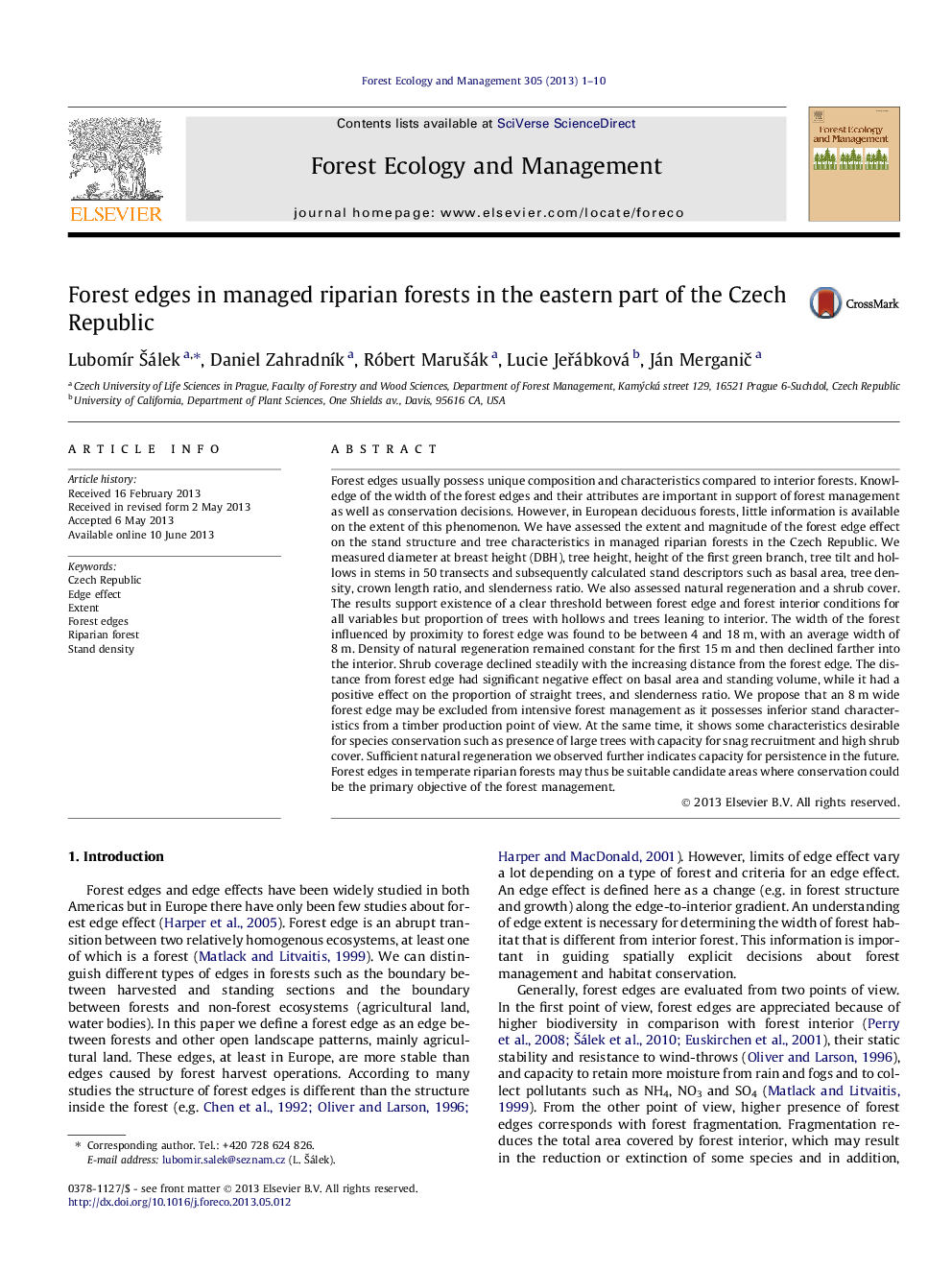| Article ID | Journal | Published Year | Pages | File Type |
|---|---|---|---|---|
| 86799 | Forest Ecology and Management | 2013 | 10 Pages |
•The average extent of forest edges in riparian forests was 8 m.•The density, basal area and stock volume were the highest on the forest edge.•The timber quality of trees growing in the forest edge was reduced.•The number of seedlings was higher in forest edge than in forest interior.•Forest edges can play important role in maintenance of big veteran trees.
Forest edges usually possess unique composition and characteristics compared to interior forests. Knowledge of the width of the forest edges and their attributes are important in support of forest management as well as conservation decisions. However, in European deciduous forests, little information is available on the extent of this phenomenon. We have assessed the extent and magnitude of the forest edge effect on the stand structure and tree characteristics in managed riparian forests in the Czech Republic. We measured diameter at breast height (DBH), tree height, height of the first green branch, tree tilt and hollows in stems in 50 transects and subsequently calculated stand descriptors such as basal area, tree density, crown length ratio, and slenderness ratio. We also assessed natural regeneration and a shrub cover. The results support existence of a clear threshold between forest edge and forest interior conditions for all variables but proportion of trees with hollows and trees leaning to interior. The width of the forest influenced by proximity to forest edge was found to be between 4 and 18 m, with an average width of 8 m. Density of natural regeneration remained constant for the first 15 m and then declined farther into the interior. Shrub coverage declined steadily with the increasing distance from the forest edge. The distance from forest edge had significant negative effect on basal area and standing volume, while it had a positive effect on the proportion of straight trees, and slenderness ratio. We propose that an 8 m wide forest edge may be excluded from intensive forest management as it possesses inferior stand characteristics from a timber production point of view. At the same time, it shows some characteristics desirable for species conservation such as presence of large trees with capacity for snag recruitment and high shrub cover. Sufficient natural regeneration we observed further indicates capacity for persistence in the future. Forest edges in temperate riparian forests may thus be suitable candidate areas where conservation could be the primary objective of the forest management.
